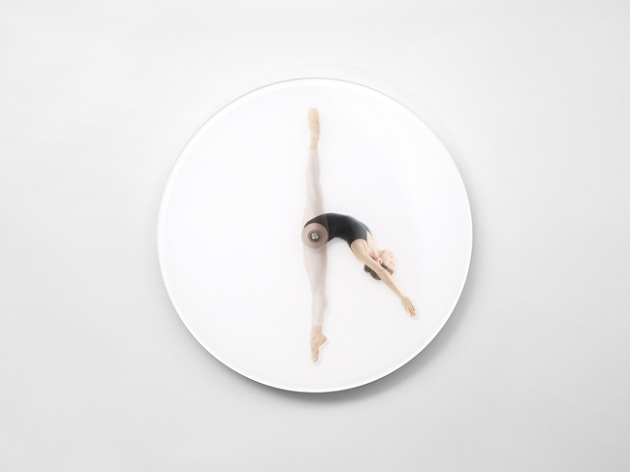Time to dance
For the balletomane on your gift list (especially the young ballet student), this is pretty and rather clever:
A reader alerted me to the clock, which is designed by Meike Harde. It seems to be available right now only through this German site, though.
[ADDENDUM: A la T.S. Eliot, the still point of the turning world:
At the still point of the turning world. Neither flesh nor fleshless;
Neither from nor towards; at the still point, there the dance is,
But neither arrest nor movement. And do not call it fixity,
Where past and future are gathered. Neither movement from nor towards,
Neither ascent nor decline. Except for the point, the still point,
There would be no dance, and there is only the dance.]


Not into ballet, but that is a beautiful clock.
Is it 6:00 pm or 12:30?
I hate clocks like this.
Anyway, http://tonyhaletest.files.wordpress.com/2013/07/walken-morecowbell.gif
I don’t dance, but every time I see young people doing impossible things on stage I wish I had taken lessons before I got old and fat and creaky.
Strikes me as a statement of our times: The crotch is the center about which all revolves.
Don Carlos:
I’d rather think of it as the still point of the turning world:
The anatomist in me can’t help it, Neo.
The still point is the center otherwise called hara by the Japanese. It is the location of balance and universal connection, the source of our individual power. Dancer, gymnast, or martial artist… hara. If you move from hara you move from mushin. Mushin is “no mind”. A state where there is no reaction but only action…. a state of body-mind-spirit unification that words are unable to truly describe. Ask Y, he’s better at this.
I think such art objectifies ballet dancers.
And here I thought ballet was timeless.
Center of gravity is the physics term. In leverage mechanics, they add a lever to move it.
Any time a stick is put on a shoulder, there’s a point where it can not fall due to gravity. The human body uses the same principle, just a bit more complicated
As for anatomy, the real anatomical structure looks something like this.
http://www.bing.com/images/search?q=anatomy+lower+spine&id=31291585CB2C6D9F40B490909AE564EF37745440&FORM=IQFRBA
The hips, the lower spine (the ganglia of nerves is considered a second brain), and the guts form the general area, with the cog somewhere in there.
There’s been significant reports on patients receiving transplanted hearts, and acquiring the tastes or habits of their donors. No spinal nerve or brain neurons were transferred from the donor, yet the neural patterns were transferred. This is the phenomenon of neural processing conducted outside of the brain, along the “second brain” in the human body, the peripheral nerve system around the spine itself.
Because a lot of things are in the general zone of contact at that location, it’s important to specify what people are referring to.
The hara, for example, may be referring to the cog or it may be referring to the guts, which transmute nutrients into energy via the blood stream, which can be accelerated by accelerating the breathing as that accelerates the heartbeat.
The neural control of balance may be processed mostly at the lower spine, and not at the upper brain as currently thought of in the field. The further neural signals have to travel, the more “lag” there is in responding to imbalance.
Ancient cultures kept talking about that area because a lot of things happened from there, whether they knew it or not. Modern cultures talk about things they know happens at certain places, but that’s not absolutely true either.
The still point is God.
And then there’s this: http://www.mymodernmet.com/profiles/blogs/dane-shitagi-ballerina-project-instagram